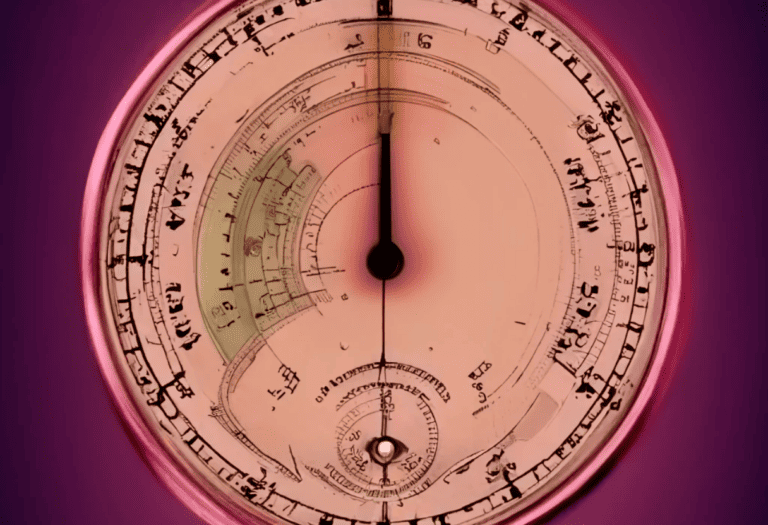Understanding the amount of rainfall your area receives can be important for many reasons, from gauging water resources to determining the irrigation needs for your garden.
Using a rain gauge effectively can help you collect accurate precipitation data. A rain gauge is a simple device that collects rain and measures its depth, giving you a clear indication of how much rain has fallen over a set period of time.
To ensure you get reliable readings, the placement of your rain gauge plays a crucial role. It should be positioned in an open area away from trees, buildings, and other obstructions that can alter the amount of precipitation entering the gauge. After securely installing your rain gauge, regular maintenance is key to avoiding any blockages or damage that can affect its accuracy.
Checking the device post-storm and cleaning it periodically will help maintain its precision for consistent use.
To use a rain gauge, place it in an open area away from obstructions. After rainfall, measure the water depth inside the gauge. Regularly clean and maintain the gauge for accuracy.
Understanding Rain Gauges
When you measure precipitation, the accuracy and reliability of your data depend largely on the type of rain gauge you use and its components. Selecting the appropriate rain gauge is crucial for obtaining precise rainfall measurements.
Types of Rain Gauges
Standard Rain Gauge: The most common type is the standard rain gauge, which comprises a funnel leading into a graduated cylinder. This type facilitates manual reading of rainfall amounts.
Tipping Bucket Rain Gauge: Ideal for recording rainfall intensity, this gauge consists of a bucket mechanism that tips and empties after a set amount of precipitation, usually 0.01 inches. Each tip is counted and provides a record of the rainfall amount over time.
Weighing Gauge: Unlike other types, the weighing gauge collects rain and measures it by weight, often producing more precise data that can also account for snowfall.
Digital and Analog Rain Gauges: Digital gauges provide electronic readings, which can be more convenient and often more detailed. In contrast, analog gauges offer a traditional interpretation that may require manual charting.
Components of a Rain Gauge
- Collector funnel: Directs the rain into the measuring component of the gauge.
- Measuring Tube: A calibrated tube, often found in a standard gauge, where you can read the rainfall amount directly.
- Tipping Bucket: A component of the tipping bucket gauge, where collected water tips the bucket at a preset volume, triggering a count for the rainfall quantity.
- Scale or Sensor: In a weighing gauge, this senses the weight of the collected water, while in digital gauges, a sensor measures and records rainfall electronically.
Selecting the Ideal Location
When setting up a rain gauge, your goal is to find a spot that reflects accurate rainfall measurements while minimizing potential errors due to environmental factors.
Importance of Proper Placement
To ensure the accuracy of your rain gauge readings, it is crucial to place it in an open area. This location should be representative of your local environment but away from any elements that could alter precipitation collection. Placement in an open area prevents possible splashback from surrounding surfaces, which can lead to artificially high readings.
Avoiding Obstructions
Your rain gauge should be positioned at a distance of at least twice the height of nearby trees or buildings to avoid obstructions. For instance, if you have a tree that’s 10 feet tall, your gauge should be at least 20 feet away to prevent any interference. Gardens can also impact readings through splashback or directing wind-blown rain into the gauge. To sidestep such issues, ensure there’s ample space around the rain gauge, free from potential obstructions.
Installation and Maintenance

Proper setup and ongoing care are crucial for your rain gauge’s precision and reliability. Ensure it’s installed vertically and at eye level for accurate measurement.
Setting Up Your Rain Gauge
- Location: Choose a site away from obstructions like trees or buildings to avoid inaccurate readings.
- Positioning: Mount your gauge vertically to ensure even rain distribution inside.
- Height: Place the rain gauge at eye level for easier reading and to prevent back strain.
Regular Maintenance
- Cleaning: Regularly inspect and clean the funnel and measuring tube to prevent blockages from debris.
- Check for Problems: Look for any damage or wear that could affect performance.
- Water Level: After rainfall, verify the water level aligns with the meniscus at eye level.
Calibrating for Accuracy
- Test with Water: Simulate rainfall by pouring a known amount of water into the gauge.
- Measurement Check: Confirm that the measured level matches the amount you introduced. If discrepancies occur, adjust the calibration accordingly.
Reading and Recording Data
Before you begin to measure rainfall, ensure that your rain gauge is properly set up in an open area. Accurate reading of the collected water is vital for reliable data, and interpreting the measurements correctly is just as important.
How to Measure Rainfall
To measure rainfall, place your rain gauge in an open area away from tall structures like trees or buildings that could block or divert rain. After a rainfall event, carefully remove the cylinder from the gauge to avoid spilling any water. The amount of rainwater is measured by using graduated cylinders that mark the volume in millimetres (mm).
- Steps for Measuring Rainfall:
- Position your rain gauge in an open area.
- After rainfall, read the level of the water against the marked increments.
- Record the measurement precisely, ensuring you are eye level with the water mark to avoid parallax errors.
Interpreting Measurements
Once you have the measurement from your rain gauge, document the data in a log. Interpret the measurements by comparing them over time to observe patterns or anomalies in rainfall.
- Important Tips:
- Consistently empty the rain gauge at the same time each day for accurate comparisons.
- Note any environmental factors that might have influenced the reading.
By following these instructions carefully, you can obtain valuable data on rainfall patterns in your area.
Frequently Asked Questions
In this section, you’ll find detailed answers about using a rain gauge effectively for accurate measurements and analysis.
What steps are involved in using a rain gauge accurately?
To use a rain gauge accurately, first ensure that it is placed in an open area away from obstacles such as trees or buildings. The gauge should be level and at a standardized height above the ground to prevent splashing. Data should be recorded at consistent intervals for reliability.
How can one read and interpret measurements from a rain gauge?
Reading a rain gauge involves checking the level of water collected against the marked lines indicating measurement units. Interpretation requires understanding these units, typically millimeters or inches, to determine the rainfall amount during a particular period.
What is the correct method for measuring rainfall with a standard rain gauge?
The correct method entails placing the gauge in an appropriate location, collecting the water over a fixed period, and reading the measurement from the calibrated scale. After each reading, the gauge should be emptied to prepare for the next measurement.
How frequently should a rain gauge be emptied to ensure precise readings?
A rain gauge should be emptied after each recorded observation, which is ideally done daily at the same time to maintain precise readings and consistency. This prevents evaporation or overflow, which can lead to inaccuracies.
What are some common uses for a rain gauge in geographical studies?
Rain gauges are integral for monitoring precipitation, which is crucial in geographical studies for understanding weather patterns, climate variability, evaluating flood risks, and water resource management.
How can one compare rainfall measurements in millimeters and centimeters?
To compare rainfall measurements, one can convert the readings by remembering that 10 millimeters (mm) equal 1 centimeter (cm). Therefore, simply divide the millimeter measurement by 10 to obtain the equivalent in centimeters.




![Sainlogic WiFi Weather Station Review in [year]](https://observationhobbies.com/wp-content/uploads/2024/01/Sainlogic-WiFi-Weather-Station-Review-768x525.png)
![Best Rain Gauge Reviews ([year])](https://observationhobbies.com/wp-content/uploads/2024/01/Best-Rain-Gauge-Reviews-768x525.png)

